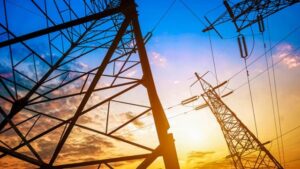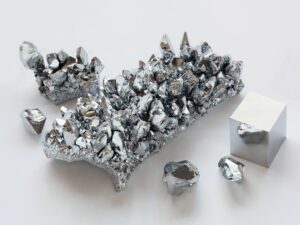
Last week, the National Bank of Ukraine (NBU) reduced sales of dollars on the interbank market by $198.3 million, or 18.1%, to $895.3 million, according to statistics on the regulator’s website.
According to the NBU, in the first four days of last week, the average daily negative balance of buying and selling foreign currency by legal entities decreased to $96.0 million from $100.2 million in the same period a week earlier and totaled $384.1 million.
The negative balance on the FX market for households increased to $43.6 million from $30.9 million the week before last, and on all days, sales of non-cash foreign currency exceeded purchases.
The official hryvnia/dollar exchange rate, which started last week at 42.0567 UAH/$1, weakened to 42.2812 UAH/$1 over three days, but ended the week at 42.2721 UAH/$1.
On the cash market, the dollar exchange rate last week followed the trajectory of the official rate, and in general, the dollar rose by about 17 kopecks over the week: buying – to 42.12 UAH/$1, and selling – to 42.49 UAH/$1.
At the same time, due to the rise in the euro against the dollar in the global market after the Fed’s decision to cut the benchmark interest rate by 25 basis points (bps), the hryvnia fell more significantly against the euro last week. Thus, the official exchange rate dropped to 49.4678 UAH/$1 from 48.9961 UAH/$1 a week earlier.
“Last week, the currency deficit remained high without any significant changes compared to the first week of December. Despite this, the NBU slightly reduced its interventions, which hints at a temporary reduction of imbalances in the interbank market,” commented the ICU investment group.
According to its experts, the NBU is concerned about the uncertain prospects for international support next year, as there is no final decision on the EU’s reparations loan yet, so the NBU’s future policy will depend on the EU’s decision on the reparations loan.
“In our opinion, it will be positive. Therefore, we expect the NBU to continue to adhere to a conservative exchange rate policy, allowing only a moderate depreciation of the hryvnia both by the end of this year and throughout 2026,” ICU believes.
Analysts of KYT Group, a major participant in the cash foreign exchange market (Liberty Finance LLC), noted that in December the hryvnia was supported by several important factors, one of the most important being the increase in international reserves to a new historical high of $54.75 billion.
“So far, the situation is such that the hryvnia should not experience any sharp jumps, but in the future (as early as 2026), the hryvnia exchange rate will be under pressure from a number of factors, including, in particular, possible difficulties with the receipt of foreign aid (and a decrease in the amount of such aid),” the company said.
According to their short-term forecast for one to two weeks, the hryvnia exchange rate will remain in the basic range of 42.15-42.50 UAH/$1 with possible multidirectional fluctuations, while in the medium term, for two to three months, KYT Group expects the exchange rate to be 42.25-42.95 UAH/$1.
“In Ukraine, the hryvnia will be influenced by several key factors: the continuation of hostilities, the difficult situation in the energy sector, the decline in economic activity, and the stability of financial assistance from creditors and partners,” the company said, adding that the long-term realistic benchmark is 43.4-44.90 UAH/$1 by mid-2026.
As for the euro, according to the company’s experts, if the Fed cuts the rate by 25 bps again in January, the euro will strengthen more actively, and its fluctuations in the Ukrainian market may reach the level of 50.20-53.20 UAH/€1.
Source: https://bank.gov.ua/ua/markets
https://interfax.com.ua/news/projects/1128490.html

The management of the Kyiv football club Dynamo has decided to appoint Igor Kostyuk as the team’s head coach, according to the Dynamo FC press service.
“Igor Volodymyrovych is a talented coach who has been working at our club for many years. He has trained more than one generation of talented young players, many of whom now play at the highest level in Europe’s top leagues. He knows Dynamo’s young players well and is not afraid to trust young players who have already proven themselves at the first team level. He is a coach who knows how to find the right approach to players,” club president Igor Surkis is quoted as saying on the club’s website.
The club’s management has complete confidence in Kostyuk and believes that he is capable of leading the team to its rightful place in Ukrainian and European football.
As reported, on November 28, the management of Kyiv’s Dynamo decided to dismiss the entire coaching staff of the team, headed by Oleksandr Shovkovskyi, from their duties, according to an official statement by the capital club on the Dynamo website. Shovkovskyi and the team were dismissed after the team’s unsatisfactory results in recent matches.
Igor Kostyuk was appointed acting head coach of the Kyiv giants.

As Serbian Economist reports, the short-term tourist rental market in Croatia from June 2026 will operate under new EU rules, which provide for the complete removal of “gray” rentals from the shadows and strict control over tax revenues.
According to the published explanations, each object rented to tourists (apartments, houses, apartments) will be assigned a unique registration number. It will become a mandatory identifier when placing advertisements on online rental platforms. Placing objects without such a number on services like Airbnb and Booking.com will be prohibited – the absence of the code will automatically mean that the object operates outside the legal framework.
The procedure for obtaining a registration number for owners will be free of charge and, according to the authorities, should simplify control over compliance with the law, as well as reduce the share of unregistered objects rented without paying taxes.
Additionally, part of the control powers will be transferred to the local level: community tourist boards will directly monitor the payment of compulsory tourist tax and will be able to promptly respond to violations by landlords operating illegally or understating real income.
It is expected that the tightening of rules will make the rental market in Croatia more transparent and predictable for tourists, as well as equalize the conditions of competition for legal landlords, while increasing tax revenues to budgets at different levels.
As a consequence, experts predict an increase in the price of vacation in Croatia by 10-12%.
https://t.me/relocationrs/1950

Transmission system operators (TSOs) of Ukraine, Slovakia, Hungary, and Romania launched the first monthly auctions for the allocation of cross-border capacity on Monday, according to Ukrenergo.
They are being held on December 15-17 on the Joint Allocation Office (JAO) platform with delivery in January 2026. The final results of the auctions are to be announced on December 23. According to information on the JAO, the capacity of the interconnection with Hungary is 460 MW, with Romania and Slovakia – 172 MW each. No interconnection capacity is offered from Ukraine.
“Long-term auctions for the allocation of cross-border transmission capacity are definitely beneficial for the Ukrainian electricity market. In the context of massive Russian attacks on our energy system, we really need confidence in a stable supply of electricity imports every month,” commented Vitaliy Zaychenko, chairman of the board of Ukrenergo, whose words are quoted in the company’s Telegram message.
“We are grateful to our partners at ENTSO-E and the JAO auction platform, as well as our colleagues from the energy system operators of neighboring EU countries for their effective cooperation. We hope that it will continue and that annual auctions will also be introduced in the future,” said Zaychenko.
According to NEC, the introduction of such auctions was made possible thanks to cooperation with TSOs of neighboring countries and with the support of the European Network of Transmission System Operators (ENTSO-E). Work on the rules for long-term allocation for the EU’s external borders has been ongoing for the past two years.
“After these rules were approved by the national regulators of Ukraine, Slovakia, Hungary, and Romania, it became possible to allocate free capacity at inter-state crossings through monthly long-term auctions. For Ukraine, this means more effective price forecasting and, in the long term, a reduction in the cost of imported electricity,” Ukrenergo explained.
As noted in the report, on a global scale, monthly auctions contribute to closer integration of the Ukrainian and European energy markets and ensure greater stability of Ukraine’s integrated energy system.
As reported, with the start of a full-scale invasion, given the military risks, ENTSO-E agreed only to daily auctions for the distribution of inter-state cross-border capacity for import and export operations with electricity.
At the same time, traders and energy companies have repeatedly pointed out that the absence of long-term auctions, in particular monthly and annual ones, hinders the effective attraction of imported electricity.
In early December, Vitaliy Zaychenko, Chairman of the Board of NEC Ukrenergo, told Energorforma that he expects the first long-term (monthly) auctions for the distribution of inter-state crossings with Romania, Hungary, and Slovakia since the start of the war to be successful.
“I think these auctions will take place. The market is definitely waiting for long-term auctions. Therefore, I think that the entire proposed cross-border capacity will be sold,” he said.
“Unfortunately, there will be no auctions in Poland because the Polish transmission system operator does not give its consent,” added the head of Ukrenergo.
It should be noted that the auctions launched today are joint, i.e., they are held simultaneously by both operators. The TSO agreed on this mechanism in 2023, and so far, daily auctions have been held under it. Monthly auctions were previously held in Moldova and Poland (Dobrotvir-Zamosc crossing), where unilateral auctions are still in place instead of joint ones.

In January-November 2025, Ukraine increased imports of lead and lead products by 6.1 times, to $7.323 million. In November, lead imports amounted to $436,000.
At the same time, exports of lead and lead products during this period decreased by 17.6% to $8.911 million. In November, exports amounted to $738,000.
In 2024, the country increased imports of lead and lead products by 2.4 times, to $2.391 million, while exports decreased by 22.9%, to $11.401 million.
In 2023, compared to the previous year, less lead and lead products were imported into Ukraine — $989 thousand (-65.2%), while exports increased by 23.5% to $14.778 million.
Lead is currently mainly used in the production of lead-acid batteries for the automotive industry. In addition, lead is used in the manufacture of bullets and certain alloys.

Insurance company INGO compensated UAH 116.4 million for military risks in Ukraine in January-November 2025, which is almost three times more than last year, according to the insurer’s information.
At the same time, it is noted that in total, over two years, the company compensated more than UAH 162 million in losses caused by hostilities.
The bulk of the compensation consists of damage to property, real estate, motor vehicles, and cargo. The payments were financed mainly from the company’s own capital without the participation of reinsurers. A significant increase in payments falls on the corporate sector, where most large objects are concentrated and, accordingly, higher risks.
The company reports that in most cases the damage is partial. For motor vehicles, typical damage includes broken windows, holes from debris, and body deformation. For residential properties, damage includes windows, doors, roofs, and facades, as well as damage to interior finishes, furniture, and appliances. In commercial real estate, the scale of damage varies significantly: from damaged warehouses and logistics hubs to complex technical facilities, where the consequences depend on the specifics of the enterprise itself.
According to the information, the increase in payments is primarily due to the expansion of the portfolio: enterprises and individuals are insuring more properties. While in 2024, war risk coverage was included for about 150 commercial real estate properties, in 2025, there were already more than 230.
The number of insured cargoes with war risks increased by 1.4 times, and motor vehicles – almost twice. During this time, INGO’s total liability for war risks increased from UAH 12.1 billion to over UAH 26.5 billion. Individuals are also insuring their homes more actively: the number of insured households increased from 4,400 to almost 6,000, and the total liability under contracts rose from UAH 4.34 billion to over UAH 7.7 billion.
In addition, the growth in the volume of payments is influenced not only by the size of the portfolio, but also by the intensity of Russian air attacks and the increase in insurance amounts. Both private owners and companies are increasingly choosing higher limits of protection, especially when it comes to large or capital-intensive objects. INGO notes that the ability to offer such limits in 2025 is ensured, in particular, by working with international reinsurance markets. The company assures that it has objects in its portfolio that are reinsured on the London market, with a total liability of over UAH 2.6 billion.
“We see that international reinsurers, primarily the London market, are working with Ukrainian risks much more confidently than a year ago,” said Andriy Semchenko, chairman of the board of INGO Insurance Company.
“This is the result of the emergence of comprehensive statistics, high-quality underwriting, and real payout cases. The AON and EBRD program has been launched, which supports the insurance of vehicle fleets, rail transport, equipment, and cargo with the option of storage in ports. For businesses, this means protection with a limit of EUR 2 million per case under the AON/EBRD program and $4-5 million in the case of real estate insurance with reinsurance on the London market. There are also opportunities for higher limits, but reinsurers are cautious about concentrating risk on a single object,” he explained.